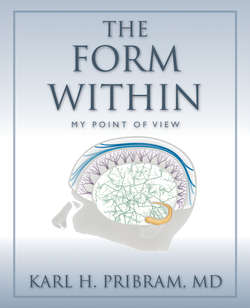Читать книгу The Form Within - Karl H Pribram - Страница 25
На сайте Литреса книга снята с продажи.
What the Experiments Did Show
ОглавлениеAlthough the experiments I had conducted had effectively demonstrated that the shape of what we see is not “mirrored” by the shape of electrical activity in the brain, as Köhler had believed, my research did show something very surprising and intriguing: When the brain electrical activity was disrupted by epileptic seizures, it took the monkeys seven times longer than usual to learn the same tasks. However, once the animals started to learn, the slope of the learning curve was identical to the rapidity of learning by normal monkeys. Only the commencement of learning had been delayed. The abnormally long delay, which also occurs in mentally retarded children, may be due to an unusually long time taken to create the proper background brain activity necessary for learning to start. (More on this shortly.)
6. Direct Current Field responses from auditory area in response to auditory stimulation. (A) Shift in response to white noise. (B) Shift in response to tone of 4000 Hertz. (C) Shift in response to white noise returning to baseline before end of auditory stimulation. (D) Response to 50 clicks/sec. returning to baseline before end of stimulation. (From Gumnit, 1960.)
My finding came about as a consequence of the fact that all of the implantations of aluminum hydroxide cream had not produced an epileptic focus. My testing, prior to implantation, of the animals that did not show a seizure pattern was therefore wasted. So, I began to implant the epileptogenic cream before commencing testing, and to limit the testing to those monkeys who had already developed the electrical seizure pattern. Thus I was inadvertently testing the monkeys who had developed seizure patterns for their ability to learn as well as their ability to perceive.
The delay in learning had to be examined further. So, in the late 1950s, I devised, along with John Stamm, a postdoctoral fellow in my Hartford lab, another series of experiments in which we imposed a DC current across the cortex from surface to depth. We found that a cathodal (negative-going) current delayed learning while an anodal (positive-going) current enhanced it.
What we had demonstrated in these experiments was that direct currents in the brain cortex influence attention and learning, but not perception.
